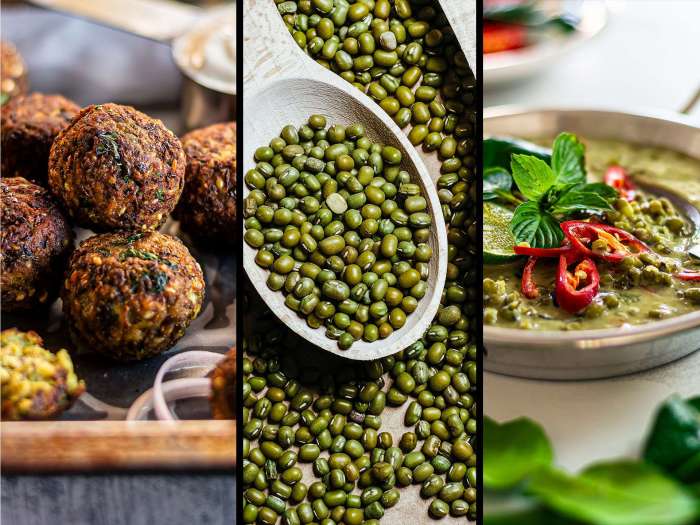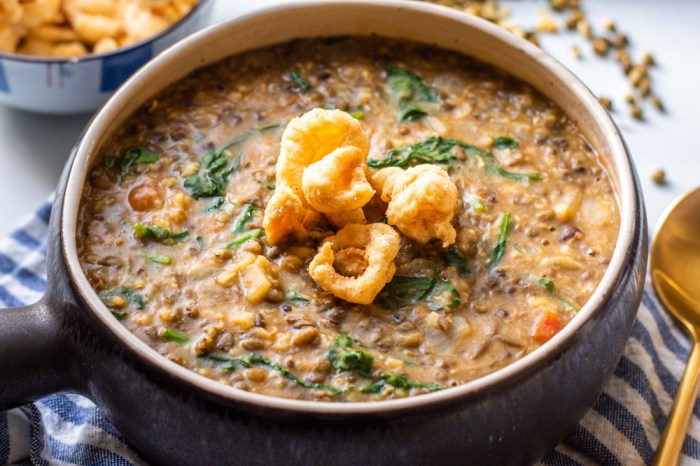How to cook mung beans filipino style – Literary criticism is a form of literary analysis that focuses on evaluating and interpreting works of literature. It involves examining the themes, characters, and writing style of a text to gain a deeper understanding of its meaning and significance. In the context of cooking mung beans Filipino style, a literary criticism approach can be applied to explore the cultural and culinary aspects of this traditional dish.
Understanding the Cultural Significance of Mung Beans in Filipino Cuisine: How To Cook Mung Beans Filipino Style
In Filipino cuisine, mung beans, also known as “monggo,” hold a special place as a staple ingredient in many dishes. They are valued for their nutritional benefits and versatility in cooking. Mung beans are commonly used in soups, stews, and desserts, making them a versatile and essential ingredient in Filipino cooking.
The Traditional Filipino Way of Cooking Mung Beans
To cook mung beans Filipino style, start by soaking the beans in water overnight to soften them and reduce cooking time. In a large pot, sauté garlic, onions, and tomatoes until fragrant. Add the soaked mung beans, water, and seasonings such as salt, pepper, and fish sauce. Let the mixture simmer until the beans are tender and the flavors have melded together.
For those who are craving a taste of authentic Chinese cuisine, why not try your hand at making clam soup Chinese style? This traditional dish is not only delicious but also easy to prepare. If you’re unsure where to start, you can follow this step-by-step guide on how to cook clam soup Chinese style. With the right ingredients and a little bit of patience, you’ll be able to enjoy a bowl of flavorful clam soup in no time!
Tips for Cooking Perfect Mung Beans

- Soak the mung beans overnight to reduce cooking time and improve texture.
- Use a flavorful base of garlic, onions, and tomatoes to enhance the taste of the dish.
- Season the mung beans with salt, pepper, and fish sauce for a savory and umami-rich flavor.
- Simmer the beans gently until they are tender but not mushy, to retain their shape and texture.
What Makes Mung Beans Filipino Style Unique
The Filipino style of cooking mung beans is characterized by its savory and comforting flavors. The use of garlic, onions, and tomatoes as a base creates a rich and aromatic broth that complements the earthy taste of the mung beans. The addition of fish sauce adds a salty and umami depth to the dish, making it a well-rounded and satisfying meal.
Solution for Common Cooking Challenges
If your mung beans are taking longer to cook than expected, try increasing the cooking temperature slightly and adding more water as needed. If the beans are too mushy, reduce the cooking time and adjust the seasonings to balance the flavors. Experiment with different herbs and spices to customize the dish to your taste preferences.
If you’re looking to learn how to cook clam soup Chinese style, look no further! Check out this amazing guide on how to cook clam soup Chinese style for a delicious and authentic recipe.
Detailed Information on Cooking Mung Beans Filipino Style, How to cook mung beans filipino style
- Start by soaking the mung beans in water overnight.
- Sauté garlic, onions, and tomatoes in a large pot until fragrant.
- Add the soaked mung beans, water, and seasonings to the pot.
- Simmer the mixture until the beans are tender and the flavors have melded together.
- Adjust the seasonings to taste before serving hot with rice or bread.
Describing in Depth the Flavor Profile of Mung Beans

Mung beans have a mild and slightly sweet flavor that pairs well with savory ingredients like garlic, onions, and tomatoes. When cooked in a broth seasoned with salt, pepper, and fish sauce, the beans take on a rich and umami-rich taste that is both comforting and satisfying. The texture of the beans is soft but not mushy, with a slight bite that adds to the overall mouthfeel of the dish.
Conclusion
Cooking mung beans Filipino style is a delicious and nutritious way to enjoy this versatile ingredient. By following the traditional cooking methods and using a combination of flavorful seasonings, you can create a dish that is both comforting and satisfying. Experiment with different herbs and spices to customize the flavor profile to your taste preferences and enjoy the rich cultural heritage of Filipino cuisine.
FAQs
- Can I substitute other beans for mung beans in Filipino cooking?
- How long does it take to cook mung beans Filipino style?
- What are some common variations of mung bean dishes in Filipino cuisine?
- Are mung beans healthy to eat on a regular basis?
- Can I make mung beans Filipino style in a slow cooker?
